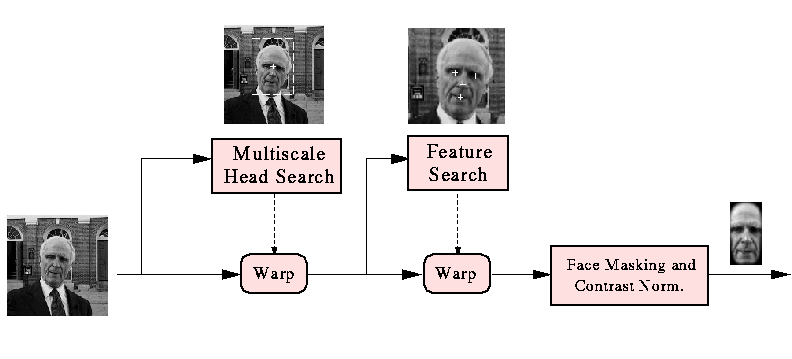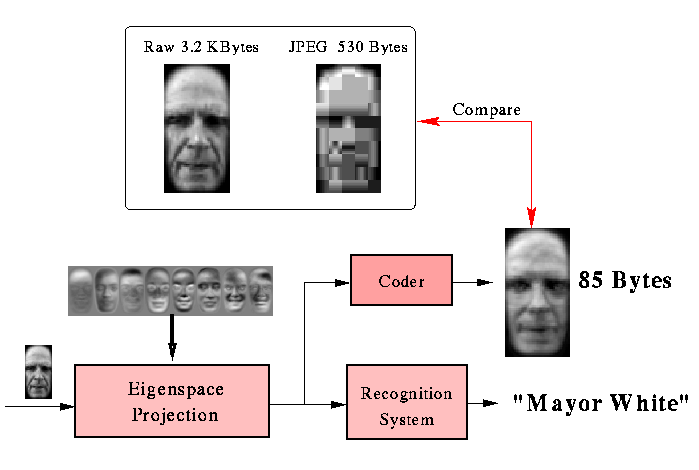An Automatic System for Detection, Recognition & Coding
of Faces

The system diagram above shows a fully automatic system for detection, recognition and model-based coding of faces for potential applications such as video telephony, database image compression, and automatic face recognition. The system consists of a two-stage object detection and alignment stage, a contrast normalization stage, and a Karhunen-Loeve (eigenspace) based feature extraction stage whose output is used for both recognition and coding. This leads to a compact representation of the face that can be used for both recognition as well as image compression. Good-quality facial images are automatically generated using approximately 100-bytes worth of encoded data. The system has been successfully tested on a database of nearly 2000 facial photographs from the ARPA FERET database with a detection rate of 97%. Recognition rates as high as 99% have been obtained on a subset of the FERET database consisting of 2 frontal views of 155 individuals.







